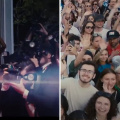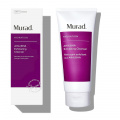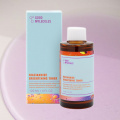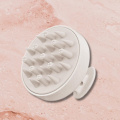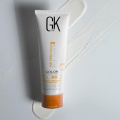The Ultimate Guide on How to Successfully Bleach Dark Or Black Hair
Discover the step-by-step process and essential tips to effectively bleach dark or black hair and unleash your desired color transformation with confidence.

For years, beaching has been a popular way to lighten dark hair. Bleaching is a process where, with the help of chemicals, you can make the hair a few shades lighter, depending on the outcome you desire. To achieve the desired color, you need to know how to bleach dark or black hair properly. Daresay, it is a little more complicated than simply combining the appropriate ingredients.
It is extremely important to approach the process with caution and to take steps to minimize damage, such as deep conditioning and using a lower-volume developer. It is also important to be patient and to expect multiple sessions to achieve the desired result. With careful planning and proper care, you can successfully bleach your dark or black hair and achieve the lightened look you desire.
However, even though this procedure gives you the desired color, it can also go the wrong way. Therefore, go through the process of bleaching hair in greater detail in the content below: a step-by-step guide to lighten the hair, the tools you will need to bleach your black hair, aftercare tips to maintain healthy hair, and the do's and don'ts of bleaching black hair.
Process for Bleaching Black Or Dark Hair

Let's begin by understanding the process of bleaching black or dark hair. If you have dark or black hair and desire certain shades, you will need to bleach it. Bleaching works by interacting with the keratin in the hair and dissolving the melanin pigment in it. The longer the bleach stays, the more keratin breaks down, making the hair lighter. Make sure you check with your hairstylist if your hair is strong enough to withstand the bleaching procedure. Weak or porous hair can be damaged at the shaft and result in hair fall. Some stylists will not recommend bleaching your hair if it has previously been colored or has undergone a process or treatment (1).
Bleaching black or dark hair is a multi-step process that requires careful planning and attention to detail to minimize damage and achieve the desired result. Let us guide you with a general overview of the process:
1. Prepare Your Hair
It is important to have healthy, strong hair before bleaching (2). Deep condition your hair regularly for several weeks leading up to the bleaching process. Avoid washing your hair for at least twenty-four hours before bleaching.
2. Choose the Right Products
Select a high-quality bleach powder and a developer with a low volume (20 or 30 percent) to minimize damage. Mix the developer and bleach powder according to the instructions.
3. Apply the Bleach
Section your hair and apply the bleach mixture to your hair evenly, starting at the ends and working your way up. Leave the bleach on for the recommended amount of time, checking frequently to ensure the hair is not over-processed.
4.Rinse And Shampoo
Once the desired lightness is achieved, rinse the bleach out of your hair thoroughly with lukewarm water. Shampoo your hair and apply a deep conditioner to help repair any damage.
5. Repeat as Necessary
Depending on the starting color of your hair and the desired lightness, multiple bleaching sessions may be necessary to achieve the desired result. Be patient and wait at least a week before bleaching your hair again to avoid excessive damage.
A Step-by-Step Guide to Lightening Dark Hair at Home

The market is filled with multiple options to bleach hair, such as bleach with or without ammonia and hydrogen peroxide in permissible quantities. You should do thorough research before picking up a product for your hair. While lightening dark hair at home can be an intimidating process, with the right tools and techniques, it can be done safely and effectively. Here is a step-by-step guide to lightening dark hair at home:
1. Buy the Right Products
Over-the-counter formulas are effective and safe for people with darker hair. Make sure to follow the instructions given at the back of the bleaching kit, as every manufacturer may have a different mixing time and application time.
2. Do a Patch Test
Always perform a small patch test before beginning the bleaching process on your elbow to check for any allergic reactions. Consider using less-strong formulations for coloring your hair if you are sensitive.
3. Mix the Bleach
Mix the liquid peroxide powder and the bleach powder in a plastic container. Do not use a metal spatula or container, as the chemicals can interact with metal.
4. Section Your Hair
Neatly divide your hair into parts, and secure each section with a clip.
5. Apply the Bleach
Starting from the ends, apply the bleach mix to each section of your hair using the applicator brush. Be sure to apply evenly and thoroughly, working your way up to the roots. You can also cover it with foil paper to improve the results.
6. Monitor the Lightening Process
Check your hair regularly to make sure it is not over-processed. It is better to lighten gradually in multiple sessions than to damage your hair by aiming for complete lightening in one sitting.
7. Rinse And Shampoo
Once the desired lightness is achieved, rinse the bleach out of your hair thoroughly with lukewarm water. Shampoo your hair and apply a deep conditioner to help repair any damage (3).
8. Take Care of Maintenance
After lightening hair, it is important to continue deep conditioning your strands regularly, to keep them healthy and minimize dryness and damage. Also, avoid heat styling tools and limit exposure to the sun and chlorine to prevent damage.
Remember, bleaching dark hair is a process that requires patience and attention to detail. If you are unsure or uncomfortable with lightening your hair at home, consult a professional hairstylist for guidance.
Tools You’ll Need for Bleaching Black Or Dark Hair

Bleaching black or dark hair requires specific tools and products to achieve the desired result. Here are some of the tools you will need for the process:
- Bleach powder: A high-quality bleach powder is essential for lightening black or dark hair. Choose a bleach powder that is specifically formulated for dark hair.
- Developer: The developer is mixed with the bleach powder to activate it.
- Plastic pins or clips: If you have long hair, you will need a plastic hair clip or bobby pins; these will hold your hair in place. Sectioning the hair will make it easier to apply the hair color and distribute an even amount of material all over. It can also reduce waste.
- Gloves and an eye mask: The use of gloves and an eye mask is extremely important while coloring your hair. Exposing your skin to chemicals used in hair coloring can cause skin barrier damage as well as skin dryness. It is always best to use disposable plastic gloves; most kits will come with gloves along with instructions. Eye mask protectors will safeguard your eyes from any chemical spills or splashes. You can also wear your old clothes to avoid staining your new ones.
- Plastic spatula, brush, and bowl: The plastic bowl is used to mix all the ingredients with the help of a plastic spatula. The plastic brush will aid in the application process.
- Plastic wrap: Covering your hair with plastic wrap during the processing time can help intensify the lightening effect.
- Petroleum Jelly: Petroleum Jelly can be applied to the skin, behind the ears, and the hairline to prevent stains on your skin.
- Shampoo and deep conditioner: After rinsing out the bleach, use a specifically formulated shampoo for color-treated hair, followed by a deep conditioner to nourish and repair any damage.
Make sure to read the instructions carefully and follow safety precautions when using these tools and products.
Bleaching at Home: After-care Tips

Bleaching dark or black hair can cause damage, so it is important to take extra care of your hair in the days and weeks following the process. Here are some after-care tips to help maintain healthy, beautiful hair after bleaching:
- Deep condition regularly: Bleaching can leave hair dry and brittle. Deep conditioning treatments can help restore moisture and prevent breakage. Use a deep conditioner at least once a week for several weeks following the bleaching process.
- Avoid heat styling: Heat styling tools, such as blow dryers, flat irons, and curling irons can cause further damage to already fragile hair. Allow your hair to air dry whenever possible, or use a heat protectant spray before using any heat styling tools.
- Limit washing: Over-washing can strip hair of its natural oils, which are essential for keeping hair healthy and shiny. Try to wash your hair no more than two or three times a week, and use a sulfate-free shampoo specifically formulated for color-treated hair.
- Protect from the sun: UV rays can damage hair, causing it to become dry and brittle. If you spend a lot of time in the sun, wear a hat or use a leave-in conditioner with UV protection.
- Trim regularly: Bleaching can cause split ends and breakage. Regular trims can help keep your hair healthy.
- Be patient: If you plan to lighten your hair further or change its color, wait at least a week before doing so. Bleaching can weaken hair, and further processing too soon can cause even more damage.
By following these after-care tips, you can help maintain the health and beauty of your hair after bleaching.
Do's And Don'ts of Hair Bleaching Process
Do's:
- Use professional-grade, good-quality hair bleach to ensure the best results.
- Follow the instructions on the package kit carefully.
- Use a deep-conditioning treatment before and after bleaching to protect your hair. It will also help prevent damage to the hair.
- Use a good heat protectant before using any heat-styling tools.
- Use an effective toner to help even out the color after bleaching.
- Before you start bleaching your hair, it is important to do a patch test to make sure you are not allergic or sensitive to the bleach.
- Apply a protective cream or petroleum jelly around your hairline and ears to protect your skin from the bleach.
- Use a clarifying shampoo before removing any product buildup.
Don'ts:
- Avoid using too much bleach on your hair; it can cause breakage.
- Do not use bleach on damaged or fragile hair; it can further worsen the hair’s quality.
- Avoid bleach on hair that has been recently permed or chemically treated.
- Don’t bleach on hair that has been recently colored
- Don’t use bleach on recently bleached hair.
Conclusion:
Bleaching black hair is a multi-step process that requires careful planning and attention to detail. With proper aftercare, we can minimize damage and achieve the desired result. It is important to choose the right products, prepare the hair beforehand, apply the bleach evenly, monitor the lightening process, rinse and shampoo thoroughly, and maintain healthy hair with regular deep conditioning. Bleaching at home can be done safely and effectively with the right tools and techniques, but it is important to do thorough research and follow the instructions carefully. Overall, with patience and care, you can successfully bleach your dark or black hair and achieve the lightened look you desire.
Sources:
1. Hair Cosmetics: An Overview
https://www.ncbi.nlm.nih.gov/pmc/articles/PMC4387693/#ref18
2. Hair: Its structure and response to cosmetic preparations
https://www.sciencedirect.com/science/article/abs/pii/0738081X9500117X
3. Shampoo and Conditioners: What a Dermatologist Should Know?





 JOIN OUR WHATSAPP CHANNEL
JOIN OUR WHATSAPP CHANNEL


